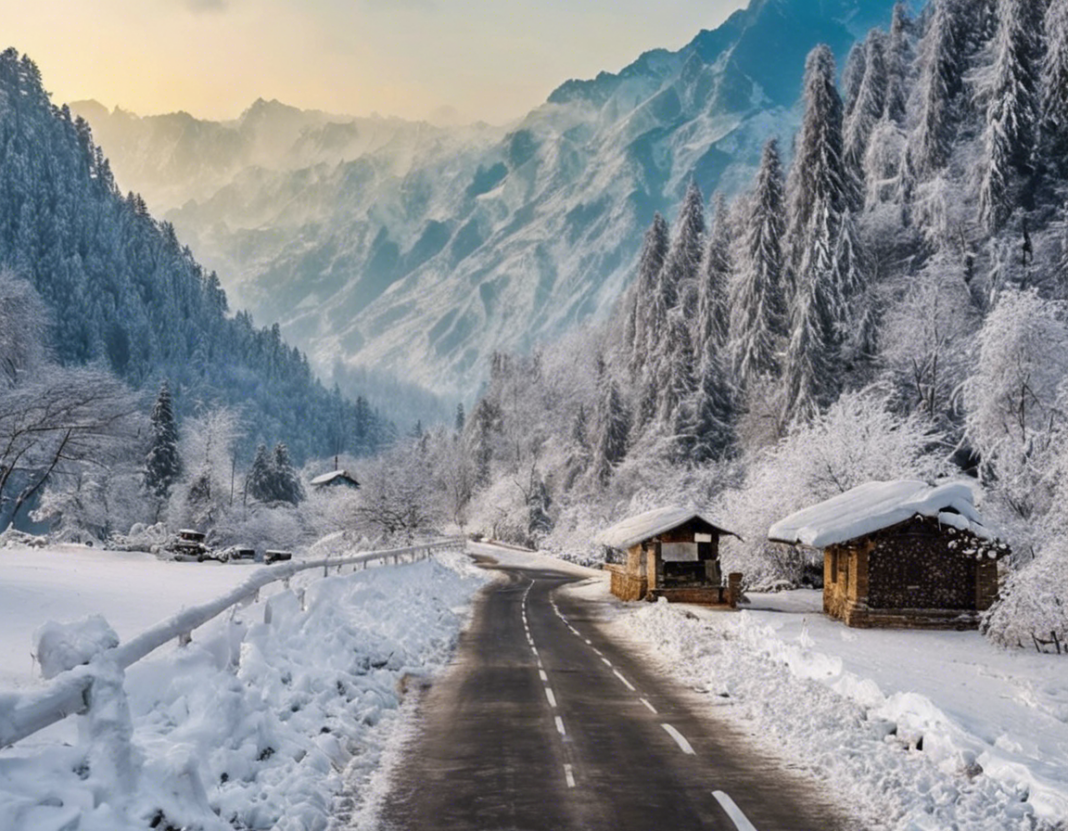The winter season in India typically lasts for about three to four months, varying in intensity and duration across different regions of the country. Spanning from November to February, this season brings a pleasant drop in temperatures, making it a favorite time for both locals and tourists to explore the diverse landscapes and cultures of the subcontinent. Let’s delve into the details of the months of the winter season in India and what makes this time so special.
November:
In the northern regions of India, November marks the onset of winter, with temperatures starting to dip. Places like Kashmir, Himachal Pradesh, and Uttarakhand experience the beginning of snowfall, turning the picturesque mountainscapes into a winter wonderland. In contrast, states like Rajasthan and Gujarat have milder winters with cool and pleasant weather, making it an ideal time to explore cities like Jaipur, Udaipur, and Ahmedabad.
December:
December is perhaps the most festive month in India, with Christmas and New Year celebrations adding to the winter charm. The Himalayan regions receive heavy snowfall during this month, attracting adventure enthusiasts and skiers from around the world. Cities like Delhi, Mumbai, and Bangalore enjoy pleasant weather, perfect for exploring historical sites, gardens, and local markets.
January:
By January, winter is in full swing across most parts of the country. Northern plains experience chilly mornings and evenings, while central and southern India boasts of moderate temperatures ideal for outdoor activities. Goa, Kerala, and Tamil Nadu witness an influx of tourists seeking warm weather and beach vacations, making it a peak tourist season in these regions.
February:
As February rolls around, the winter season begins to bid adieu to most of India. The northern states still experience cold temperatures and chances of snowfall, while the rest of the country starts to transition into spring. This month is ideal for exploring wildlife sanctuaries like Ranthambore, Jim Corbett, and Kaziranga, as the dry winter weather makes wildlife spotting easier.
Why Visit India During the Winter Months?
- Pleasant Weather: Winter in India offers a respite from the scorching heat of summer, with comfortable temperatures making outdoor activities enjoyable.
- Festive Vibes: With Christmas, New Year, and festivals like Diwali and Lohri, winter in India is a time of celebration and merriment.
- Snowfall: The northern regions of India receive snowfall during winter, transforming the landscapes into a magical winter wonderland.
- Cultural Experiences: From winter markets to traditional fairs and festivals, this season offers a glimpse into India’s rich cultural tapestry.
Winter Activities in India:
- Skiing: Head to Gulmarg in Kashmir or Auli in Uttarakhand for an exhilarating skiing experience.
- Desert Safari: Explore the Thar Desert in Rajasthan on a camel safari or jeep ride, soaking in the desert beauty.
- Beach Escapes: Relax on the pristine beaches of Goa, Kerala, and Andaman and Nicobar Islands for a tropical winter getaway.
- Wildlife Safaris: Embark on thrilling wildlife safaris in national parks like Ranthambore, Bandhavgarh, and Periyar, spotting majestic animals in their natural habitats.
FAQs (Frequently Asked Questions):
Q1: Is winter a good time to visit India?
A1: Yes, winter is an excellent time to visit India, especially for those looking to escape the summer heat and enjoy pleasant weather across the country.
Q2: What should I pack for a winter trip to India?
A2: Pack layers, including sweaters, jackets, scarves, and gloves for cold regions, and light clothing for warmer areas. Don’t forget to carry comfortable walking shoes.
Q3: Are there any winter festivals in India?
A3: Yes, winter in India is marked by festivals like Christmas, New Year, Diwali, Lohri, and regional winter fairs that showcase local traditions and culture.
Q4: Which are the best places to see snow in India during winter?
A4: Gulmarg in Kashmir, Manali in Himachal Pradesh, Auli in Uttarakhand, and Gangtok in Sikkim are some of the best places to experience snowfall in India during winter.
Q5: Can I go trekking in India during the winter months?
A5: Yes, winter is a great time for trekking in India, especially in regions like Himalayas and Western Ghats where the weather is clear, offering stunning views.
Q6: Are there any winter sports activities in India?
A6: Yes, adventure enthusiasts can enjoy skiing in Gulmarg and Auli, ice-skating in Shimla, and snowboarding in Manali during the winter months.
Q7: How crowded are tourist destinations in India during the winter season?
A7: Popular tourist destinations tend to be more crowded during the winter season, especially around Christmas and New Year. It’s advisable to make bookings in advance.
Q8: What are the typical temperatures in India during the winter months?
A8: Temperatures vary across regions. Northern India experiences colder temperatures, with places like Srinagar and Shimla dropping below freezing, while southern states like Kerala and Goa maintain mild and pleasant weather.
Q9: Can I see wildlife during winter in India?
A9: Yes, winter is an excellent time for wildlife safaris in India as animals are more active, and vegetation is less dense, making it easier to spot wildlife in national parks and sanctuaries.
Q10: Are there any health precautions to take during winter in India?
A10: It’s advisable to stay hydrated, wear appropriate clothing to stay warm, and protect your skin from cold winds. In regions with snowfall, be cautious of ice and snow-related injuries while exploring.
In conclusion, the winter months in India offer a unique blend of experiences, from snow-capped mountains to sun-kissed beaches, cultural festivities to wildlife safaris. Whether you seek adventure, relaxation, or cultural immersion, winter is an ideal time to explore this vibrant and diverse country. Start planning your winter getaway to India and create memories that will last a lifetime.






